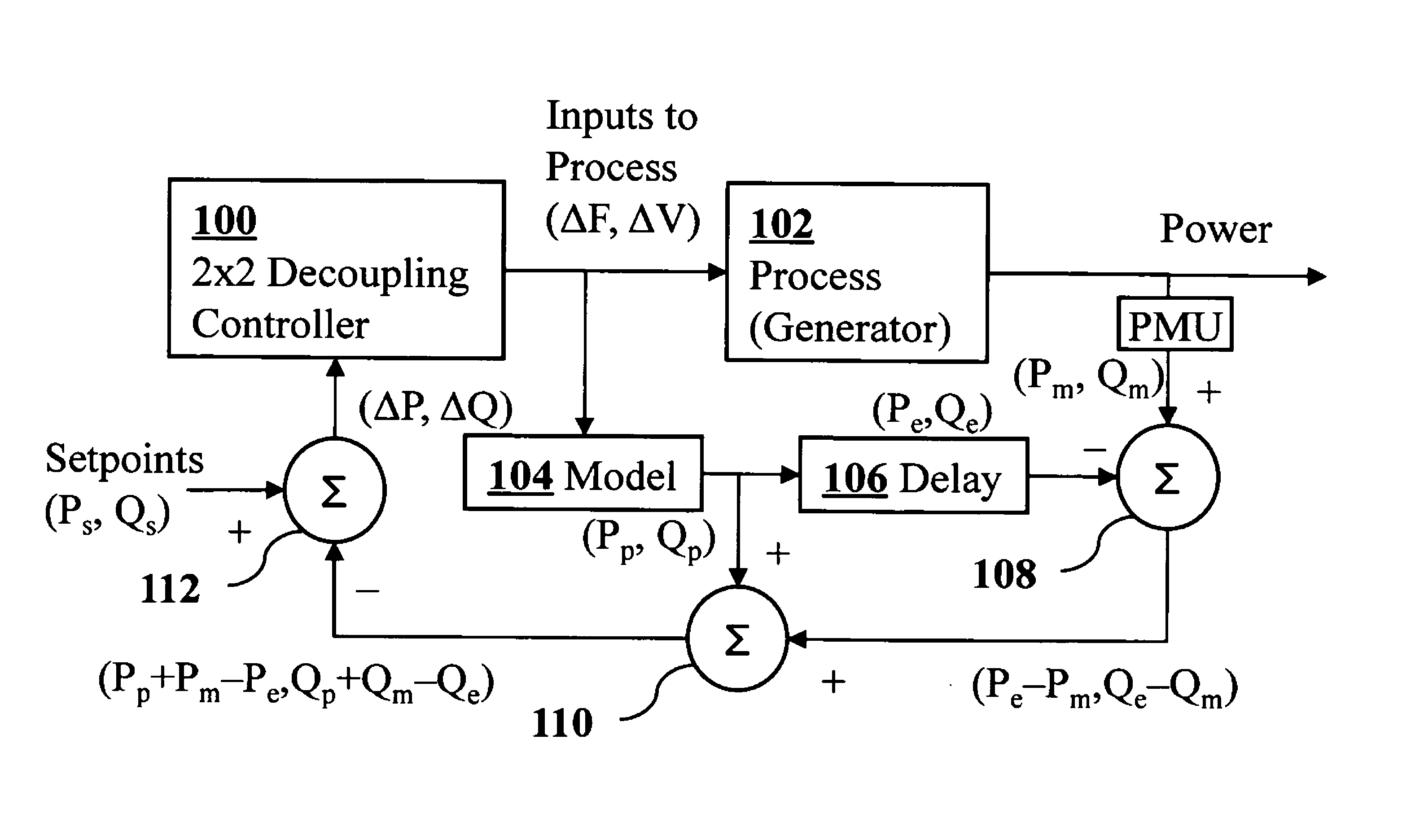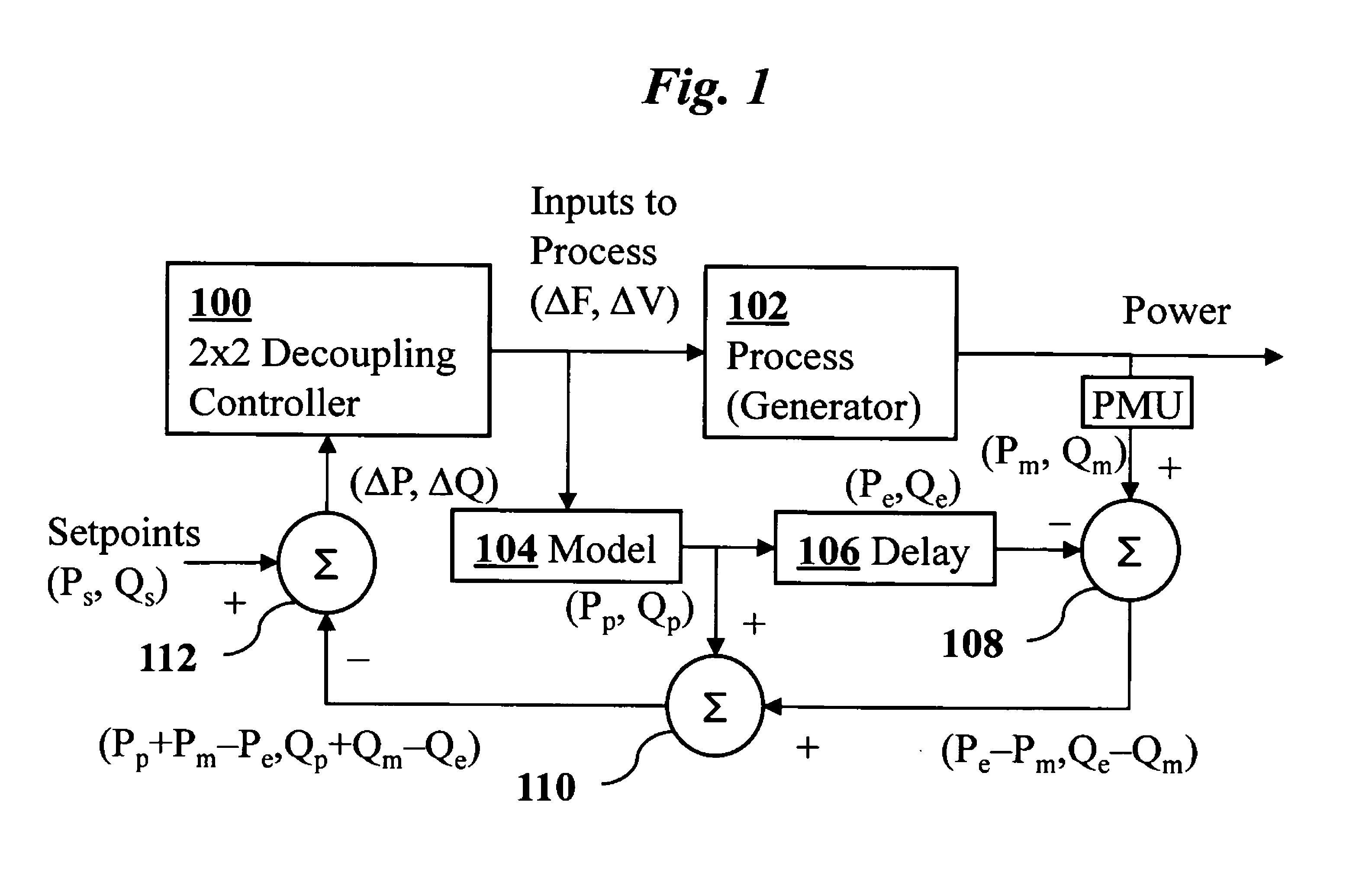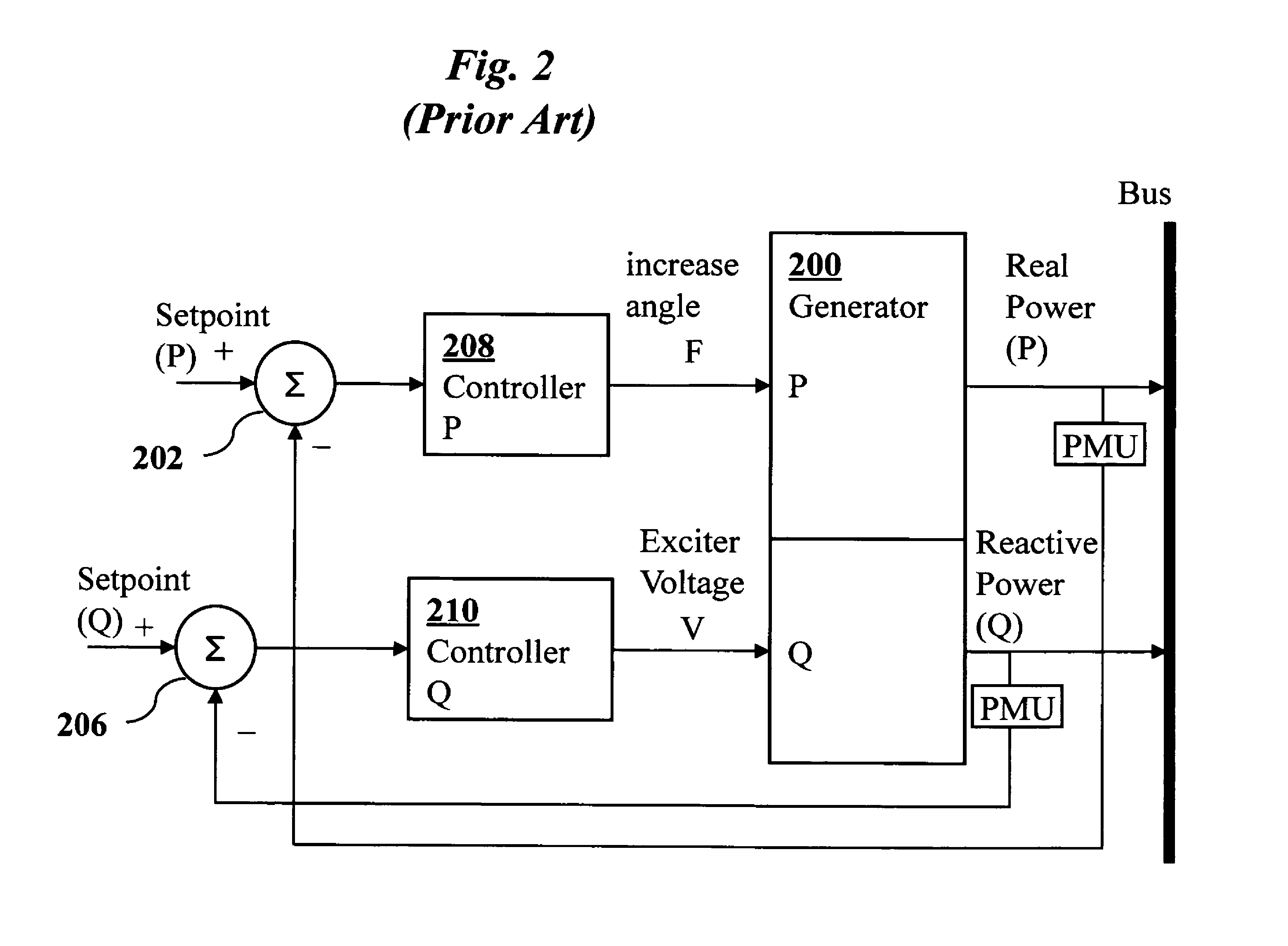Decoupling controller for power systems
a power system and controller technology, applied in non-electric variable control, process and machine control, instruments, etc., can solve the problems of voltage and frequency on the microgrid bus to oscillate, increase the reactive power delivered, voltage to change,
- Summary
- Abstract
- Description
- Claims
- Application Information
AI Technical Summary
Benefits of technology
Problems solved by technology
Method used
Image
Examples
Embodiment Construction
[0015]The principles of the present invention may be appreciated by first considering the behavior of the CERTS microgrid controller.
[0016]FIG. 2, for example, shows a prior art controller system for generator 200 with separate P and Q feedbacks to independent summation elements 202 and 206 and simple proportional-integral-derivative (PID) controllers 208 and 210. The derivative term is rarely, however, used since the oscillation between P and Q would be amplified by a derivative term in the standard controllers. Thus, the controllers are in effect PI controllers. The P and Q set points entering from the left of the figure are selected by the grid dispatcher to request specific amounts of real power P and reactive power Q (e.g., 100 MW real power and 10 MVAR reactive power). The dispatcher will request different set points depending on how the grid is responding to loads that cause distortions in voltage and frequency (e.g., if the grid frequency is low, the dispatcher requests a hi...
PUM
 Login to View More
Login to View More Abstract
Description
Claims
Application Information
 Login to View More
Login to View More - R&D
- Intellectual Property
- Life Sciences
- Materials
- Tech Scout
- Unparalleled Data Quality
- Higher Quality Content
- 60% Fewer Hallucinations
Browse by: Latest US Patents, China's latest patents, Technical Efficacy Thesaurus, Application Domain, Technology Topic, Popular Technical Reports.
© 2025 PatSnap. All rights reserved.Legal|Privacy policy|Modern Slavery Act Transparency Statement|Sitemap|About US| Contact US: help@patsnap.com



